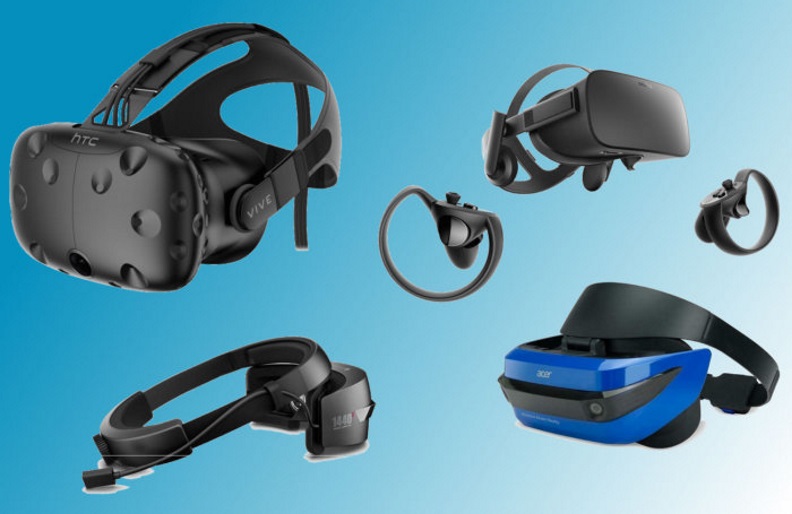At the end of 2017, Microsoft announced that its Mixed Reality headsets would be compatible with SteamVR.
This places the headsets in competition with the HTC Vive and Oculus Rift, making them potential alternatives to the high-end VR devices for gamers.
To see how they stack up, we compared the specifications, pricing, and features of the Vive, Rift, and Windows Mixed Reality headsets – detailed below.
HTC Vive and Oculus Rift
The HTC Vive and Oculus Rift both use their own motion controller designs and feature room-scale tracking.
Tracking sensors must be placed around a user’s room for the room-scale-tracking feature to be used, however.
This feature allows the wearer to navigate a virtual area of space depending on the real-world area around them.
The specifications of the Vive and Rift are listed below.
| Specifications | HTC Vive | Oculus Rift |
|---|---|---|
| Display | OLED | OLED |
| Resolution | 2,160 x 1,200 | 2,160 x 1,200 |
| Refresh Rate | 90Hz | 90Hz |
| Field of View | 110 degrees | 110 degrees |
| Headphones | No | Yes |
| Price | $599 | $399 |
Windows Mixed Reality
Unlike the HTC Vive and Oculus Rift, Windows Mixed Reality headsets follow a set design standard to ensure compatibility with Microsoft’s platform.
The head-mounted displays feature cameras on the front of the visor which track the user’s hand movements as they appear in its line of sight.
Movement is tracked through the use of Windows Motion Controllers, which are compatible with all Mixed Reality headsets.
The specifications of five of the Windows Mixed Reality headsets currently available internationally are detailed below.
| Maker | Dell | Lenovo | Samsung | ASUS | Acer |
|---|---|---|---|---|---|
| Display | LCD | LCD | OLED | LCD | LCD |
| Resolution | 2,280 x 1,440 | 2,280 x 1,440 | 2,880 x 1,600 | 2,880 x 1,440 | 2,280 x 1,440 |
| Refresh Rate | 90Hz | 90Hz | 90Hz | 90Hz | 90Hz |
| Field of View | 110 degrees | 105 degrees | 110 degrees | 95 degrees | 95 degrees |
| Headphones | No | No | Yes | No | No |
| Price | $449 | $399 | $499 | $549 | $299 |
Platforms
The hardware on offer varies greatly between these products, and it is important to note which platforms the devices support before making a purchasing decision.
The Oculus Rift is compatible with the Oculus Store and SteamVR – and is the most user-friendly VR headset for gaming at the moment.
The HTC Vive delivers better tracking features and is built to be compatible with SteamVR, but requires a third-party workaround to access Oculus Store content.
Windows Mixed Reality units are unique in that they are primarily designed for a Windows platform which combines virtual reality with augmented reality.
They are the only devices which are currently compatible with this platform, and they are also able to run SteamVR titles.
Running SteamVR requires installing Early Access software for compatibility and room-scale tracking will not be supported in certain titles.
Each head-mounted display has its own advantages, and the better choice depends on the applications you will use the hardware for.
The variety of Windows Mixed Reality headsets also means that customers can choose the device that best suits their needs, whether it is for professional applications or VR gaming.

3 comments